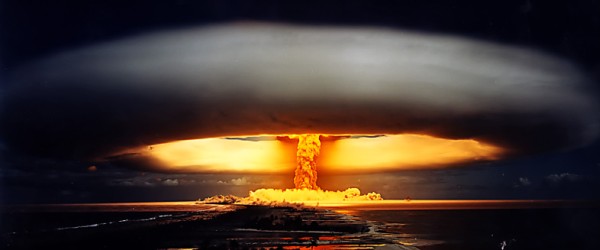
Jeffrey Lewis writes: Once a president gives the order to use nuclear weapons, there is no turning back. The system is designed to very quickly render the president’s will into death and destruction on the other side of the world. So maybe don’t elect the guy who melts down on Twitter every other day.
Trump’s temperament is pretty different from, say, that of Brzezinski, who tells the story about the 3 a.m. phone call as kind of a dark gag. I suppose Zbig got used to it. There was a series of false alarms in June 1980, usually described as having occurred because of the failure of a 46 cent computer chip. A few years later, the Center for Defense Information — the forerunner, in a roundabout way, to Global Zero — learned that between 1977 and 1984, there were 1,152 “moderately serious” false alarms. False alarms are so common that I actually suspect the system would fail to respond to a real Russian launch. I just can’t imagine Bushes, Clintons, or Barack Obama retaliating while there’s even a glimmer of doubt about an attack. My guess is that they would all decide to risk waiting to be sure an attack was underway, that it wasn’t a false alarm or cyberattack, instead of hastily opting for certain nuclear holocaust. Given what we know about human beings and confirmation bias, launch under attack is probably less dangerous than just pointless.
The problem, though, is what happens in a crisis. What happens when confirmation bias is pushing in the other direction? If we think Russia might launch such an attack, then it is easier to imagine a president making a hasty decision.
My advice to any future president would be to drop launch under attack as a mainstay of U.S. nuclear policy. Some systems might still be capable of launching quickly, but I would design the nuclear force around the assumption that the president plans to “ride out” a nuclear attack. This means having enough weapons at sea to do the job and relegating any land-based nuclear weapons to the role of warhead “sink,” drawing fire away from cities. The Obama administration has made some steps in this direction, instructing the military to plan for more realistic contingencies — but it has still elected to retain launch under attack as an option.
I am not much of a fan of launch under attack, and have said as much to policymakers in Washington, but I’ve long been resigned to no one listening to me. Defense experts have a fetish about giving the president options, and they are simply loath to abandon this one, no matter how unrealistic. It is U.S. policy now and for the foreseeable future. In fact, Washington has gone to great lengths to design its nuclear forces, as well as its command and control system, around the ability of the president to determine the fate of hundreds of millions of people in a matter of minutes. The upcoming deliberations about nuclear modernization, which will probably cost a trillion dollars over the next 30 years or so, will proceed on the same assumption. If we’re going to design the entire system in this way, to emphasize the speed and decisiveness of a single person, we should probably also pick that person carefully. [Continue reading…]

